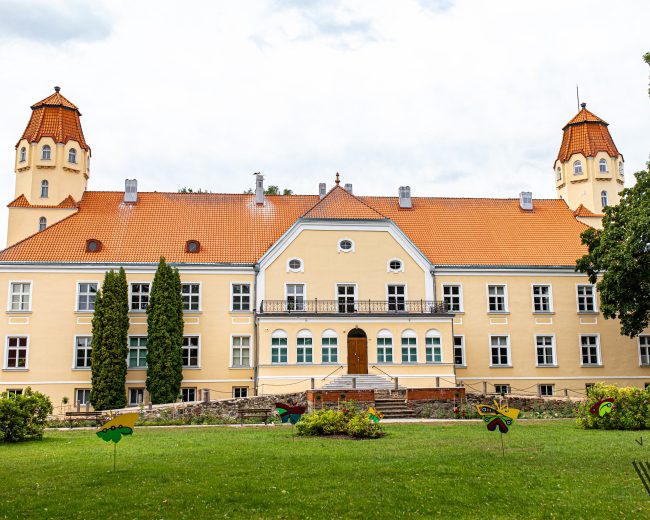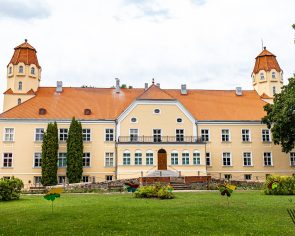Suntaži Manor Palace
Even if you don’t know its history, the palace of Suntaži Manor undeniably proves how ambitious and self-sufficient the urban ecosystem of Suntaži Manor was.
The stone fence of the manor has also been preserved, although in bad condition. Once it surrounded the entire territory of the manor. Part of the ancient park around it can be walked through.
The place is attractive to visitors of different ages.
The place is accessible from the outside for a large number of visitors. Groups can view the interior of the castle, as well as the parish and history exposition located in the castle premises. Please apply prior to the visit. It is possible to climb the castle tower and enjoy the surrounding landscape.
During the Great Northern War, the old medieval castle of Suntaži was destroyed and later the new castle was built on the old foundations. In 1764, the Suntaži manor passed into the possession of Baron Honald Gustav Ingelstrom (his mother was born in Mecca). In 1780, Count von Mengden ruled the manor. In 1782, the owner was Major Magnus Johann von Grothus. In 1816, the manor came into the possession of the Hanenfeld family.
After the agrarian reform in 1920, the Suntaži manor palace was expropriated from the previous owners and the Suntaži elementary school was established there, which in 1952 turned into the Suntaži secondary school.
In the 19th century, two square towers built in the Tudor style were added to the building. During the 1905 revolution (November 27), the palace was partially burned down. In 1909, the last owner of the manor, von Hanenfeld, restored it by building a second floor. The square top of the towers was transformed into an octagonal one. In 1984, an extension was built to the building with classrooms and a gym, which visually lowers its architectural expressiveness.
Historically, manors were established as a rural enterprise, therefore the manor or palace building was also surrounded by a complex of several other buildings – a dairy, a stable, a barn, a granary, servants' houses, laundry houses, birdhouses and a gardener's house. Some of these buildings have survived to our days, some are in bad condition, while others have perished.
Available from the outside at any time of the year.


Working time
Outside space is always available.
Indoor visit for groups only.

